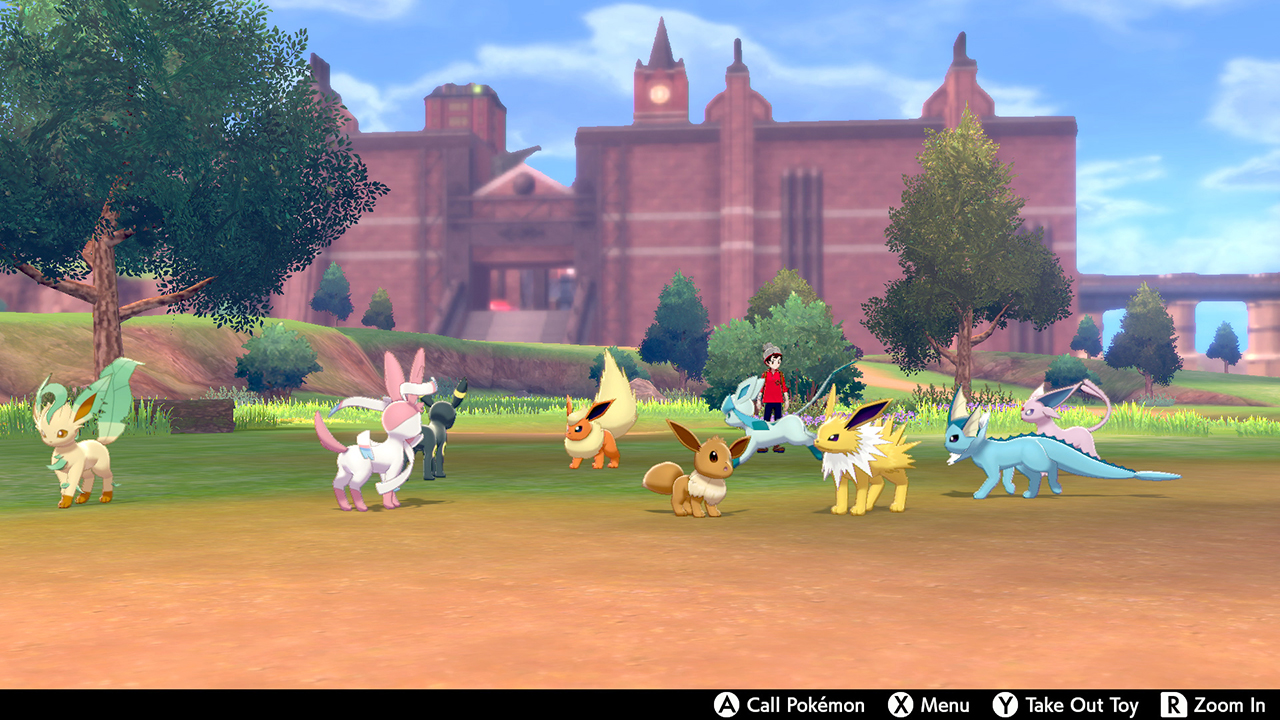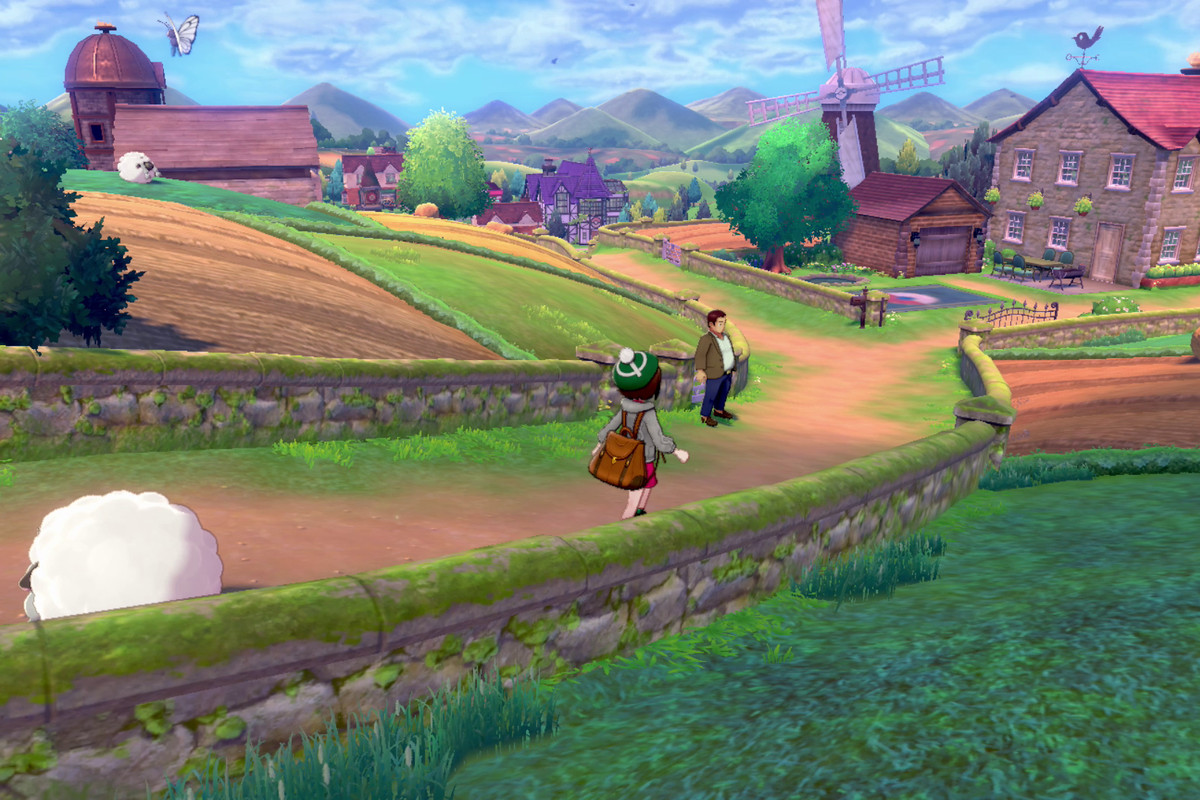As a British person, I was cautious going into Pokémon Sword and Shield. The usual anxiety that this might be the game that finally turns me off Pokémon was worsened by concern for how they would depict my home country.
I need not have worried. The Galar region, inspired by the rolling countryside and football hooliganism of England, is a lovely addition to the Pokémon world. It takes some stereotypes of British culture, but incorporates them into the game in ways that are charming, funny and intelligent. Some details are even surprisingly subtle. When the game first loads, you’re sitting in your living room with a cup of tea on the table in front of you. It’s lovely.
While the narrative structure of Pokémon Sword and Shield is broadly similar to previous games – you collect gym badges, you challenge the champion, you catch ‘em all – there are some new elements.
Rather than wanting world domination, the villain team are supporters of another trainer whose enthusiasm has crossed into aggression. The climax of the story doesn’t come from purposefully evil actions but from genuinely misguided decisions. It has a little more nuance than the likes of early Pokémon villains.

The gym challenge system is also changed somewhat. You have to be endorsed by an established trainer before you can challenge gyms, so not any random kid with their first Rattata can take on gym leaders. You also don’t take on the first gym until much later in the game than usual. First, you go through the Wild Area, where you can train and catch Pokémon a huge amount, meaning you can have the makings of your final team with you before you challenge the first gym.
This likely won’t impact the experience of any children playing, but as an adult, I appreciate the logic behind the new narrative.
Pokémon Sword and Shield is a great looking game. The detail in the settings is beautiful. Most of the actual Pokémon look really cool. I can’t speak for anyone who picked Sobble or Scorbunny, but I loved have Grookey as my partner Pokémon. It was an interesting choice to keep all three starters single type right up to their final evolution. It makes you think a bit harder about how to build a team around them.
There are some aspects of the game that feel like the first step towards fulfilling their potential. The Wild Area, for example, offers a new way to play with others, but there are certainly improvements that could make it a more fluid experience. I like the direction it’s going, though, and I’m looking forward to seeing what they do with it.

There are always going to be people who pick holes in new Pokémon games, who want it to feel like the first time the played Yellow twenty-odd years ago.
I understand some criticisms about Pokémon Sword and Shield. I also like the sense of achievement you get from completing the national dex and it’s a shame there isn’t one in this generation. But the game is already huge – I still had three gym badges left to get after more than thirty hours of gameplay. I understand why they didn’t want it to get too long.
For the most part, I also like the new generation of Pokémon, including the new designs and evolutions of existing Pokémon. There are a few I’m not terribly excited about, but Gen 1 had a seal Pokémon that looked like a seal and was called Seel, so maybe it’s time to accept that we only prefer Gen 1 because of nostalgia.
Overall, I think Pokémon Sword and Shield did an impressive job of balancing content for adults who have been playing for decades and children coming to the series for the first time.
Review: Pokémon Sword and Shield (Nintendo Switch)
Excellent
There are some aspects of Pokémon Sword and Shield that feel like they’ll reach their full potential in the next generation, but overall the game is fun, pretty and has a universality to its appeal that is genuinely impressive.



December 1, 2019
[…] Pokémon Sword and Shield […]
February 4, 2022
[…] be probably the most excited I’ve been for a Nintendo recreation in current reminiscence. I loved Sword and Defend and really appreciated the Diamond and Pearl remakes, as effectively. I couldn’t stand Let’s […]
February 4, 2022
[…] Arceus might be the most excited I’ve been for a Nintendo game in recent memory. I enjoyed Sword and Shield and actually liked the Diamond and Pearl remakes, as well. I couldn’t stand Let’s Go, […]
February 5, 2022
[…] be probably the most excited I’ve been for a Nintendo recreation in current reminiscence. I loved Sword and Shield and really appreciated the Diamond and Pearl remakes, as properly. I couldn’t stand Let’s Go, […]